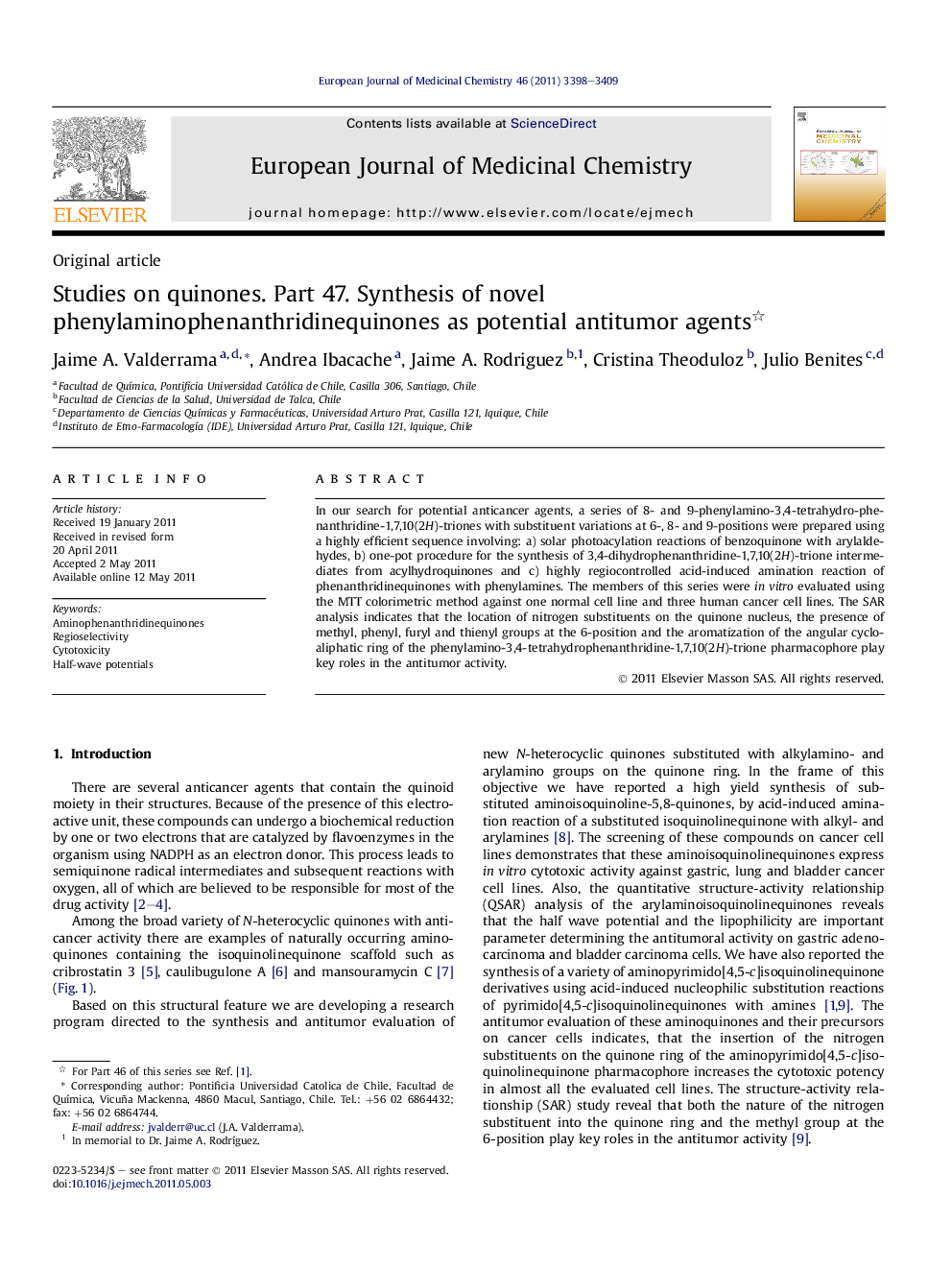| Article ID | Journal | Published Year | Pages | File Type |
|---|---|---|---|---|
| 1394617 | European Journal of Medicinal Chemistry | 2011 | 12 Pages |
In our search for potential anticancer agents, a series of 8- and 9-phenylamino-3,4-tetrahydro-phenanthridine-1,7,10(2H)-triones with substituent variations at 6-, 8- and 9-positions were prepared using a highly efficient sequence involving: a) solar photoacylation reactions of benzoquinone with arylaldehydes, b) one-pot procedure for the synthesis of 3,4-dihydrophenanthridine-1,7,10(2H)-trione intermediates from acylhydroquinones and c) highly regiocontrolled acid-induced amination reaction of phenanthridinequinones with phenylamines. The members of this series were in vitro evaluated using the MTT colorimetric method against one normal cell line and three human cancer cell lines. The SAR analysis indicates that the location of nitrogen substituents on the quinone nucleus, the presence of methyl, phenyl, furyl and thienyl groups at the 6-position and the aromatization of the angular cycloaliphatic ring of the phenylamino-3,4-tetrahydrophenanthridine-1,7,10(2H)-trione pharmacophore play key roles in the antitumor activity.
Graphical abstractA variety of novel phenylaminophenenthridinequinones were synthesized to evaluate their antitumor activity. Among the members of the series, quinones 4a, 7a, 16, 18 and 20 exhibited similar or better activity to that of the reference drug etoposide.Figure optionsDownload full-size imageDownload as PowerPoint slideHighlights► A series of aminophenanthridinequinones derivatives were designed and synthesized. ► The in vitro antitumor activities were further evaluated. ► Some members showed high antitumor activity compare to etoposide as a reference drug.
